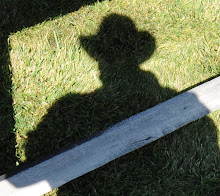From childhood I have been interested in photography. I remember the first camera I owned, a Kodak Instamatic and the anticipation between the time I looked through the plastic viewfinder to dropping off the film at the store to opening the envelop that contained the prints. Blurred Black and White Images greeted my expectations and they were great!
My Dad was in the Navy before I was born and while he was in Japan, he bought a 35mm Nikon camera. I was fascinated by the camera. My grandfather too loved to travel the west and photograph people and places. His brother was an avid photographer, owning a Hasselblad (the one they took to the moon) with lots of lenses. Uncle Dee even had a darkroom in his house and during his active years captured hundreds of thousands of images.
In college, I studied film. Film, different from photography, captures not a single moment in time, but a "slice" of time. In those days, it was a very, very expensive pursuit to create a film. Not only was the equipment expensive, but the film, developing, effects and prints were tens of thousand of dollars. Not only did we make and edit films, we also studied Film History and Theory.
One of the classes I took was in the School of Architecture. In that class, the major assignment was to take a 35mm camera and tell a story with still images. This was probably the most challenging assignment I received. How do you tell a story with a still camera?
Film making has a structure. Storytelling has a structure. The easiest way to define it is to think about a story. Stories have a beginning, middle and an end. Lots of great filmmakers will tell you that they are just good storytellers. Stories without structure are confusing or boring to those who view them. More on storytelling later.
Movies also use techniques like "contrast and compare" to tell you about a character. Making movies, contrary to the current thinking, is about more than owning a video camera and nice editing software. The fact that so few films see theatrical release is a testament to this.
Fast forward the Digital Age. When the digital age came along, I have to admit I was not impressed. Low image quality and printing on a home printer were horrible. My first digital camera was a Sony Mavica MVC-FD7. It stored images on a 3.5" floppy drive of all things.
I avoided any more digital experience until about 2002 when I bought a Nikon D1 (don't ask, it fit a lot of Lenses I owned with my F100) Now I own a Nikon D3. I think that Nikon has finally figured it out. Lenses that match the sensor and compliment each other.
In late 2002 I got really interested in multimedia and researched scrapbooking because it provided a template of how an industry was born. Original Photo Albums were a $100 million dollar business but over a decade, scrapbooking took the industry to new levels and and estimated $3 billion in annual sales. I studied this for more than a year, noting what people did, what they valued and how the word got out.
Next: Multimedia and the Chart of Many Bubbles
12 years ago

No comments:
Post a Comment